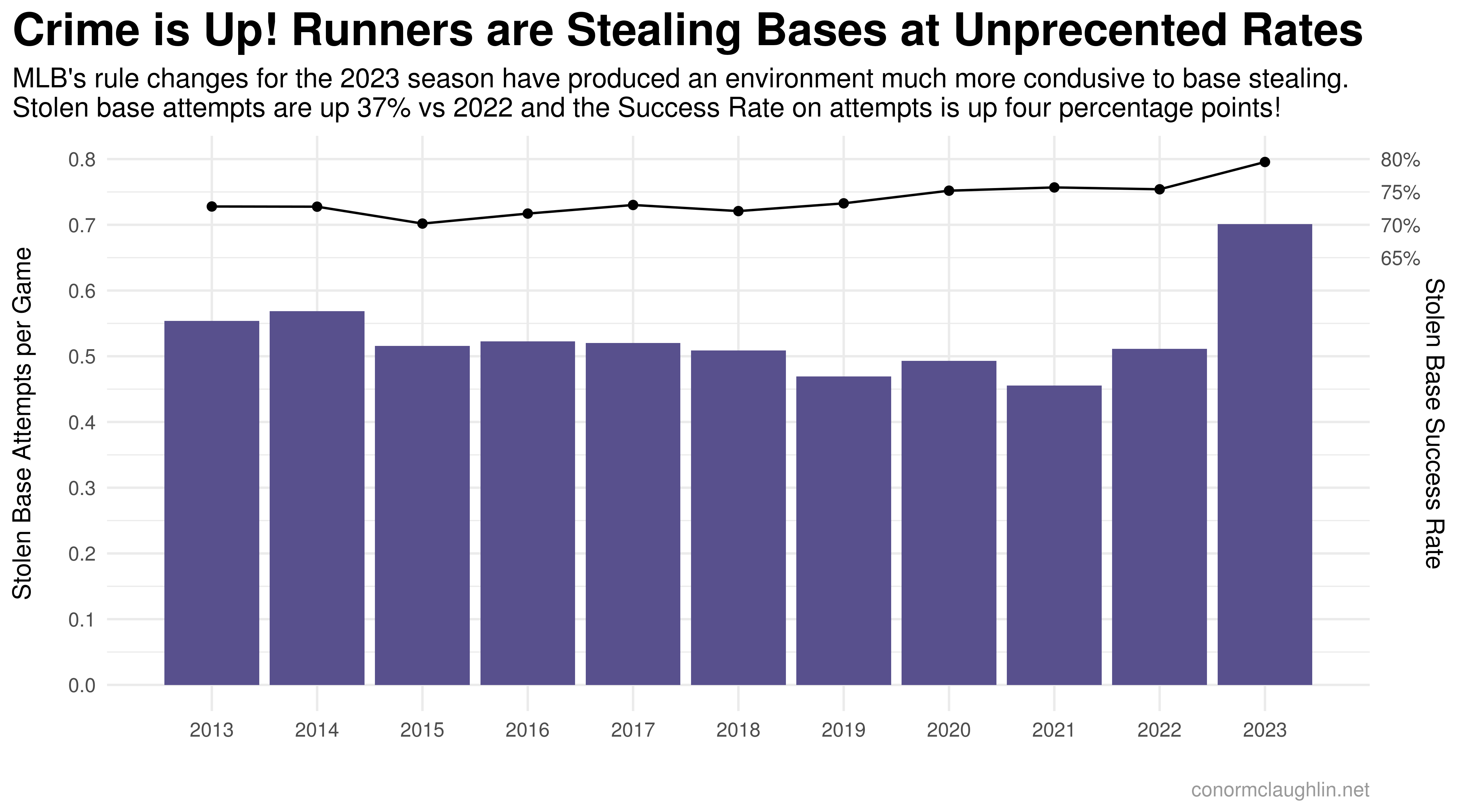About a month ago, I wrote a post highlighting the new MLB pitch clock. In it, we were able to see that the implementation of the timer seems to have driven a half-hour decrease in game runtimes - for most fans, a huge improvement.
Game runtimes weren’t the only perceived issue that the MLB tried to address in the offseason - they also sought to create more action on the basepaths. This was done through a few different mechanisms:
- The bases were physically widened, reducing the distance from base-to-base by a few inches and increasing the probability that “bang-bang” plays will go to the runner
- Pitchers now only get two pickoff attempts per plate appearance. They can attempt a third, but if they do not catch the runner out, the runner gets to automatically advance a base
- Implementation of the pitch timer itself creates more urgency for the pitcher, which runners can take advantage of in a variety of ways - primarily by taking more aggressive leads as the timer dwindles
What Data Can We Evaluate?
Luckily for us, it should be pretty easy to observe whether or not this season is seeing more “entertaining” outcomes on the bases. In my mind, there are really two primary metrics here which matter:
- Stolen Base Attempts per Game: are baserunners trying to swipe an extra base more often?
- Stolen Base Success Rate: when they steal, are they more likely to come in safe?
Visualizing Stolen Base Trends Over Time
To compare the 2022 and 2023 seasons, and add some historical context, I’ve fetched these metrics for the last ten seasons.
When the series are charted, three things really pop:
- Prior to the 2023 season, Stolen Base Attempts had been on a slow but seemingly inexorable glide path downwards - of late, roughly 0.5 steal attempts per team game
- The 2023 rule changes seem to have violently arrested and reverse that decline - with stolen base attempts skyrocketing into the 0.7 per game area
- Furthermore, the Stolen Base Success Rate has also climbed - something we wouldn’t typically expect to happen when volume increases. For example, if a basketball player shot a lot more three-pointers, we naturally expect their efficiency to drop a bit. With this rule change, we’ve seen the opposite - more volume and more efficiency!
